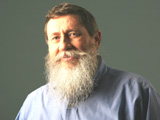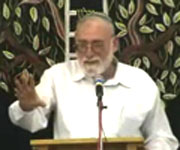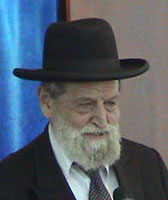Beit Midrash
- Torah Portion and Tanach
- D'varim
- Re'e
This week's Torah portion – Re'eh, Deut. 11,26-16,17 – tells us that we must "seek G-d's presence" (12,5) in Jerusalem, and specifically at the site of the Holy Temple, known today as the Temple Mount.
The Medrash Sifri explains that this verse is telling us to "seek" via a prophet. We are obligated to consult with the prophet regarding the construction of the Temple and its precise location.
Concerning the King of Israel we have a similar obligation, about which we will read in next week's Torah portion: We are charged to install a king, in accordance with the prophet's directives. The laws of the king are to be connected with the prophet.
And there is also a third mitzvah in this little group, that of wiping out Amalek: "G-d is at war with Amalek for all generations" (Exodus 17,16). The laws regarding this commandment were given over to King Sha'ul by the Prophet Shmuel (as is also apparent from the words of Psikta Rabati 12).
In our Kabbalat [Greeting] Shabbat prayer, we recite Psalms 95-99, including these verses: Moshe v'Aharon b'khohanav, "Moshe and Aharon were among His priests, and Shmuel among those who call in His name… In a pillar of cloud He spoke to them, they kept His testimonies and the statutes [that] He gave them." We know that G-d gave the Torah to Moshe, and some of the laws He gave to Moshe and Aharon together – but what laws were ever Divinely instructed to Shmuel?
The explanation is as above: The laws of kingship in Israel were given to the nation via the Prophet Shmuel. This is clearly stated in the Medrash Yalkut Tehillim (853) on the above verse: "We know that Moshe was taught the Torah, and we also know regarding Shmuel, that a Torah scroll was written for him, as is written after Shmuel chose Sha'ul to be king, "Shmuel told the people the rules of the kingdom, and wrote it in the Book and placed it before G-d" (Shmuel I 10, 25).
We learn from here that these three commandments - to seek out and build the Temple, install a king, and destroy Amalek – are unique in that they must be performed at the directives of a prophet. And these are also the three mitzvot that must be performed when Israel enters the Holy Land, as the Talmud teaches (Sanhedrin 20b): "Israel was commanded to perform three mitzvot when they enter the Land: to install a king, to cut off the descendants of Amalek, and to build the Holy Temple."
At first blush this is strange. We were commanded many mitzvot upon entering the Land - especially those that are agricultural, but not only those! Why are these three specifically noted?
Rashi explains that these three are inter-dependent, in that they must be performed in a certain order. But we can add another reason, based on what we said above: These three are to be executed in a particular manner, with the guidance of a prophet, and therefore they were listed on their own.
The Exact Spot
We note that when the Torah speaks of the site where G-d's Divine Presence is to dwell, which is where the Holy Temple is to stand, it does not specify its exact location (as Maimonides notes in his Guide to the Perplexed). It rather refers to it as "the place that I will select." Similarly, when Avraham Avinu is told to offer up his son Isaac as a sacrifice on Mt. Moriah, where the Temple will later be built, the exact location is left vague: "on one of the mountains that I will tell you" (B'reshit 22,2).
Bottom line: In order to build the Temple, it is incumbent upon us to awaken our desire for G-d's presence among us. This is precisely the Torah's words, l'shichno tidrishu. We must seek G-d, and this very pursuit and search will bring us closer to our inner Temple. As we read in Parashat Terumah: "They shall make for Me a sanctuary and I will dwell in their midst." This means that man himself constitutes a dwelling place for the Divine Presence, and he must seek to do so in accordance with prophetic guidance.
Maimonides wrote (in his Epistle to Yemenite Jewry): "It is fitting for the public to rely on the Prophets, those with the true eyes... and after the [era of the] prophets, they must put their trust in the Sages, who study day and night the various explanations and opinions in order to ascertain which are true and which are false." And the Gaon of Vilna wrote similarly in his commentary to Seder Olam Rabba.
May it be G-d's will that the Beit HaMikdash be rebuilt speedily in our days, and that we receive our share in His Torah.
In order to get articles like this delivered straight to your inbox every week, subscribe to the Israel National Torah newsletter here.
Translated by Hillel Fendel




























